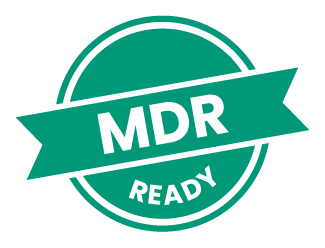Epicondylitis, also known as ‘tennis elbow’, is an inflammation affecting the epicondyle, i.e. the upper part of the elbow, where the tendons of the extensor muscles of the hand and wrist are inserted. Although it is common among athletes, and particularly in tennis, it can affect anyone who makes repetitive movements with the forearm.
Epicondylitis, symptoms
The main symptom is localised pain, very often associated with limited grasping ability. One struggles, therefore, to clench one’s hand into a fist or grasp objects firmly.
– Elbow pain: more intense when cold or when shaking hands.
– Lack of grip strength: difficulty gripping objects firmly, especially when performing the movement that caused the pain.
– Pain on palpation of the epicondyle area.
Especially in the acute phase, exerting pressure on the area affected by epicondylitis can cause acute pain, which increases especially when the hand is clenched into a fist.
– Difficulty with rotational movements.
Lack of strength and pain can make actions such as pouring a liquid from a bottle difficult and painful.
– Pain and difficulty in elbow extension, both in the acute and chronic phase
– Increased temperature and possible reddening of the elbow.
As an effect of the local inflammation, one may notice an increase in elbow temperature and sometimes even a reddening of the skin.
Epicondylitis is diagnosed primarily through a clinical examination, possibly supported by ultrasound. The pain starts locally at the elbow during use of the hand and may intensify even at rest, especially in the morning. It often occurs intermittently, worsening with movements such as pouring water from a bottle or grasping objects. If left untreated, it can become chronic, causing tendon changes, calcifications and reduced arm function, necessitating more complex interventions.
The causes of epicondylitis
Epicondylitis is caused by an inflammation of the tendons that connect the extensor muscles of the fingers and wrist to the elbow. This problem develops as a result of intensive use of the hand and forearm muscles, whether for sport or work activities. Repetitive movements, such as those required by sports such as tennis or golf, intense manual labour or household tasks, can overstress the tendons. Lack of warm-up, poor muscle strength and vibrations that strain muscles and tendons also contribute to the onset of the condition.
The main risk factors include:
– Sports activities: sports such as tennis and golf, which involve repetitive movements of the wrist and forearm.
– Intensive work activity: prolonged use of hand tools, such as hammers or spanners, which overstress tendons and muscles.
– Housework: activities such as ironing or other repetitive tasks that engage the hand and wrist muscles.
– Precision work: intensive computer use or repetitive movements with the fingers, especially in the absence of correct posture.

Is epicondylitis cervical?
Elbow pain can result from cervical problems, with substantial differences in both symptomatology and diagnostic stage.
Elbow pain of cervical origin is caused by neurological or neurodynamic problems that cause the pain to be referred to the arm or, as in this specific case, the epicondyle, but the origin of the pain is at the cervical level. The cause of this pain may be inflammation of one of the nerves of the brachial plexus or the presence of pathologies at the level of the intervertebral discs.
Differential diagnosis is essential in order to distinguish epicondylitis of mechanical origin, i.e. ‘tennis elbow’, from pathology of cervical origin.
Epicondylitis and epicondylitis, the differences
Epicondylitis affects the extensor tendons of the elbow, while epicondylitis affects the flexor tendons. These are similar conditions but involve opposite sides of the elbow.
Remedies for epicondylitis
If you are wondering whether epicondylitis heals on its own, the answer is no. Or rather, not immediately. Below are some remedies and therapies to treat this condition, since, although widely used, there is more than just infiltration for epicondylitis.
Solutions to treat epicondylitis vary depending on the intensity of the pain and the level of chronicity. A brace can reduce pain during sports activity, although it is not a definitive cure.
Among natural remedies, the application of ice (cryotherapy) helps to decrease inflammation, while pharmacological treatments must be evaluated by a doctor.
An effective option is local infiltration of specific drugs, often combined with physical therapies to optimise medium- to long-term results. Recently, infiltrations of Platelet-rich Plasma (PRP), a technique that uses platelet-rich plasma to promote tissue healing, are becoming more popular.
Physical therapies such as magnetotherapy, ultrasound therapy and diathermy can also contribute to the regression of the condition, unlike braces, which merely contain the symptoms.
Rehabilitation exercises are essential for recovery, but only after the pain has disappeared.
Wondering how to reduce inflammation or how long epicondylitis lasts? Read on!
Reduction of inflammation can be achieved with ice, local physical therapy or medication, but for effective treatment it is essential to identify and eliminate the underlying cause. Epicondylitis tends to heal very slowly if neglected, with recovery times that can last for months or even years. The duration of recovery depends on the timeliness of treatment, the appropriateness of treatment, and whether the underlying cause can be eliminated. If properly addressed at an early stage, it can resolve within a few weeks, while in the absence of adequate treatment it can become chronic and difficult to treat.
Magnetotherapy for epicondylitis
Magnetotherapy (PEMF Therapy) is a non-invasive treatment that promotes the reduction of inflammation and accelerates the healing process, making it particularly useful in both acute and chronic phases of the condition. One of its main advantages is that it can be used comfortably at home, making it an accessible solution for many patients.
Ultrasound for epicondylitis
Ultrasound therapy, on the other hand, must be used with care. In the acute phase, it is not recommended directly on the inflamed tendon, but can be effective at the muscular level, promoting relaxation and improving vascularisation. In the chronic phase, ultrasound treatment on the tendon can stimulate healing, although it may initially cause a temporary increase in pain, known as a ‘reactive crisis’. For this reason, it is advisable to be followed by an experienced physiotherapist who can properly monitor the progress of the treatment.
Epicondylitis and tecar therapy
Finally, tecartherapy, or diathermy, is considered one of the most effective solutions in both the acute and chronic phases. The treatment is often combined with physio-kinesitherapy and infiltrative techniques to maximise therapeutic benefits. The use of tecartherapy is particularly popular among health professionals, who adjust its intensity and modality according to the patient’s needs.
In conclusion, epicondylitis, or ‘tennis elbow’, is a painful condition that can significantly affect the quality of life of sufferers. Understanding what epicondylitis is and recognising its symptoms is crucial for early intervention and preventing complications. If you suffer from epicondylitis in your elbow and need more information or advice on how to manage this condition, please do not hesitate to contact us. Our team is here to help you choose the most suitable device for your needs, according to your doctor’s instructions.





